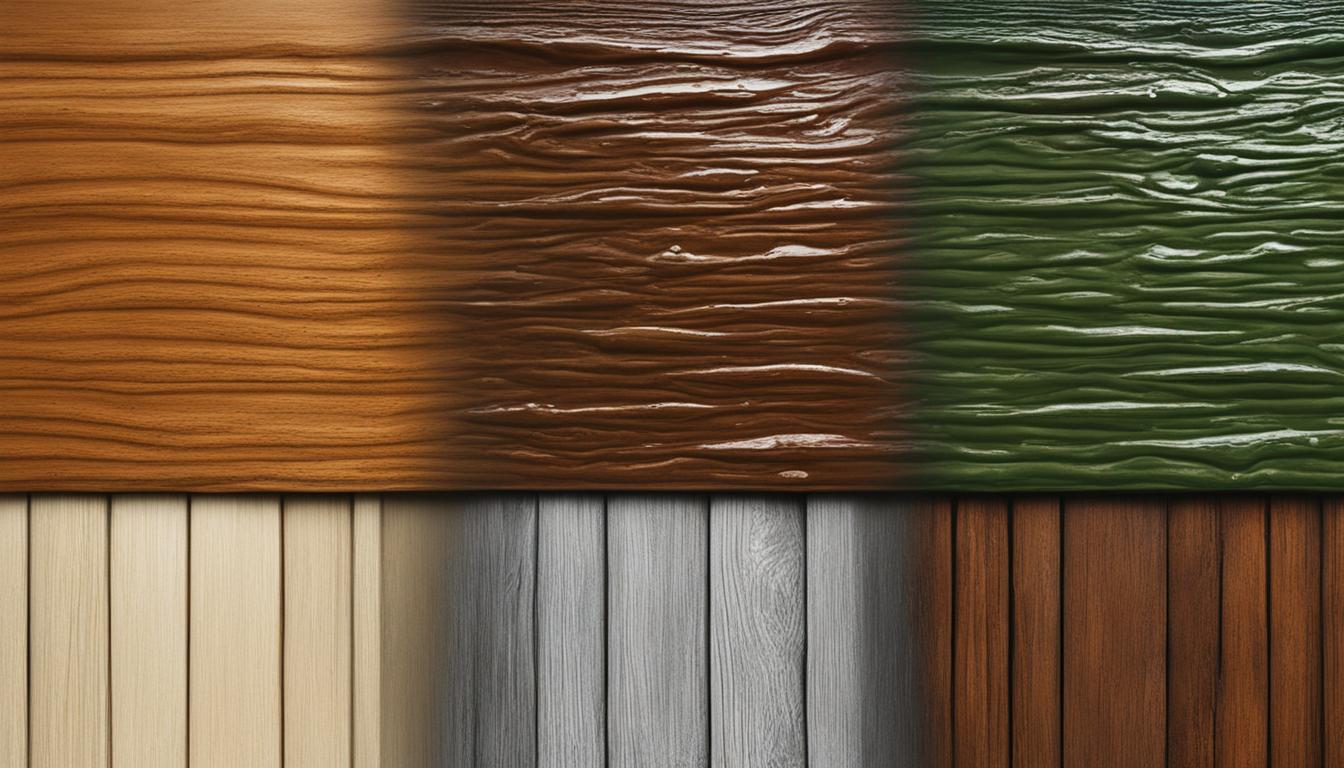Water damage is a common problem that many homeowners face. Whether it’s a leaky roof, burst pipe, or flooding, water damage can have severe consequences if left unaddressed. One of the biggest concerns is how to know if the damage is permanent or not.
If you want to know whether your water damage is permanent or not, it’s essential to understand what water damage is and how it can affect your property. In the following sections, we will explore the topic in-depth and provide tips on how to identify permanent water damage and prevent it from happening again.
Key Takeaways:
- Water damage can have severe consequences for your property if left unaddressed.
- Understanding the signs of permanent water damage is crucial to prevent further harm.
- Assessing the extent of the damage can help determine the appropriate action to take.
- Prompt and effective mitigation is essential to minimize the chance of permanent damage.
- Implementing preventive measures can reduce the risk of water-related issues in the future.
Understanding Water Damage and Its Effects
Water damage is a serious issue that can wreak havoc on your home. It can occur due to natural disasters, such as floods and hurricanes, or due to internal causes, such as burst pipes or leaky roofs. Understanding the nature of water damage is crucial to solving the problem effectively. Water damage refers to any damage caused by water intrusion into a structure or material.
The effects of water damage can vary depending on the severity of the damage and the affected area. One of the most common effects of water damage is the growth of mold, which can cause health problems for residents, including respiratory issues. Water damage can also weaken the structural integrity of a building and compromise its safety. Moreover, it can impact the value of your property and lead to costly repairs and replacements if not addressed promptly.
In terms of the effects on specific parts of your home, walls, floors, and furniture are some of the areas that are most vulnerable to water damage. If left untreated, water can seep into the walls and cause structural damage, as well as promote the growth of harmful mold. Similarly, water can warp and damage floors, causing them to buckle or become unstable. Additionally, water can ruin your furniture, carpets, and other household items, making them unsalvageable.
Signs of Irreversible Water Damage
Water damage can cause irreversible harm to your home if not addressed promptly. Here are some key signs to look out for:
| Signs of Irreversible Water Damage | Description |
|---|---|
| Mold Growth | When water damage is left untreated, mold can begin to grow in as little as 24-48 hours. Once it takes hold, it can spread quickly and be hard to eliminate completely, even with professional help. |
| Structural Damage | Water can weaken and compromise the structural integrity of your home. If you notice cracks in your walls, ceilings, or foundation, it could be a sign of irreversible damage. |
| Persistent Dampness | If your home remains damp even after cleaning and drying, it could be a sign that water has seeped deep into surfaces and is causing ongoing damage that can’t be reversed. |
If you observe any of these signs, it’s critical to take immediate action to address the damage. The longer you wait, the more severe and widespread the damage can become, eventually leading to permanent harm that’s difficult and costly to repair.
Assessing the Extent of Water Damage
Water damage can be extensive and cause significant harm to your property. To assess the extent of water damage, you need to consider various factors, such as the source of water, the duration of exposure, and the affected materials.
One critical factor to assess the extent of water damage is the porosity of the affected materials. Porous materials such as drywall, carpet, and insulation absorb water and tend to retain moisture for an extended period, leading to irreversible damage. Non-porous materials such as ceramic tiles and metals are less likely to retain moisture, reducing the risk of permanent damage.
Another indicator of the extent of water damage is mold growth. Mold can grow in as little as 24 hours in damp environments, indicating the presence of excess moisture. If left uncontrolled, mold can cause severe health hazards for you and your family.
To fully assess the extent of water damage, consult with a professional restoration company. They have the necessary expertise and equipment to evaluate the damage and provide effective solutions.
Overall, assessing the extent of water damage is crucial in determining the appropriate restoration process and minimizing the risk of permanent damage to your property.
Dealing with Permanent Water Damage
If you’ve identified permanent water damage in your home, it’s crucial to act quickly to avoid further deterioration. Hiring a professional water damage restoration company is the most effective strategy to address the issue promptly and comprehensively. Upon assessing the severity of the damage, the team will utilize advanced techniques to remove the water, dry, dehumidify, and disinfect the affected areas, preventing mold growth and structural damage.
Restoration techniques used by professionals include the use of industrial water extractors, air movers, and dehumidifiers, employed to dry the water and restore the affected areas without causing further damage to the structure of your home.
It’s important to note that water damage restoration is not a DIY project. It requires specialized skills, knowledge, and equipment. Attempting to restore the damage yourself may cause further harm, resulting in higher repair costs and a longer restoration time frame.
Another important factor to consider is insurance coverage. Homeowner’s insurance may cover the cost of water damage restoration, depending on the source and cause of the damage. Be sure to check with your insurance company to understand your coverage and deductibles.
In the case of permanent water damage, it’s crucial to take timely action and seek professional assistance to ensure the damages are addressed effectively and without delay. Doing so will not only save you time and money but also provide peace of mind and a safe environment for you and your loved ones.
Preventing Water Damage in the Future
To ensure your home remains protected from water damage in the future, it’s important to take proactive steps and implement preventative measures. Follow these tips to keep your home safe:
- Regularly inspect your home for any signs of water damage, such as mold, dampness, and leaks.
- Make sure your gutters and downspouts are clear of debris and functioning correctly.
- Install flood sensors and water alarms to alert you in case of a potential issue.
- Ensure your plumbing system is well-maintained and in good condition.
- Invest in a sump pump to remove excess water in the event of a flood.
By following these preventative measures, you can minimize the risk of water-related issues and ensure your home remains in good condition for years to come.
Conclusion
In conclusion, you must stay vigilant and stay on top of water damage in your home. By understanding the potential effects and signs of irreversible damage, you can take appropriate steps to mitigate the damage and prevent it from becoming permanent. Whether it’s a burst pipe or a leaky roof, acting swiftly can make all the difference in minimizing the scope of the damage and ensuring your home remains in good condition for years to come.
FAQ
Is water damage permanent?
Water damage can potentially be permanent if left untreated for extended periods. It can lead to structural issues, mold growth, and the deterioration of materials. However, timely intervention and proper restoration techniques can help minimize the long-term effects.
How can I identify water damage in my home?
You can spot water damage by looking out for signs such as water stains, discoloration, peeling paint or wallpaper, musty odors, warped flooring, and visible mold growth. These indicators suggest that water has infiltrated your home and caused damage.
What are the effects of water damage?
Water damage can have various effects on different areas of your home. It can weaken the structural integrity of walls and floors, result in the growth of mold and mildew, damage furniture and personal belongings, and create an unhealthy living environment.
What are the signs of irreversible water damage?
Signs of irreversible water damage include persistent dampness, widespread mold growth, visible decay or rot, sagging ceilings or walls, and foul odors. These indicators indicate that the damage has become more severe and may require professional intervention.
How do I assess the extent of water damage in my home?
To assess the extent of water damage, you can visually inspect the affected areas, use a moisture meter to measure moisture levels, check for any soft spots or sponginess in materials, and consult with professionals who can conduct a thorough assessment.
How can I deal with permanent water damage?
Dealing with permanent water damage requires prompt action. It is advisable to hire experienced professionals who specialize in water damage restoration. They can employ effective techniques such as water extraction, drying, dehumidification, and mold remediation to mitigate the damage and restore your home.
How can I prevent water damage in the future?
To prevent water damage in the future, you can take several precautions. Regularly inspect your home for leaks, maintain proper drainage systems, ensure proper ventilation in damp areas, install moisture barriers, and consider using water detection devices and alarms.
What is the importance of addressing water damage promptly?
Addressing water damage promptly is crucial to prevent further deterioration and minimize the chances of permanent damage. Ignoring water damage can lead to more extensive issues, such as mold growth and structural instability, which can be costly and time-consuming to repair.









